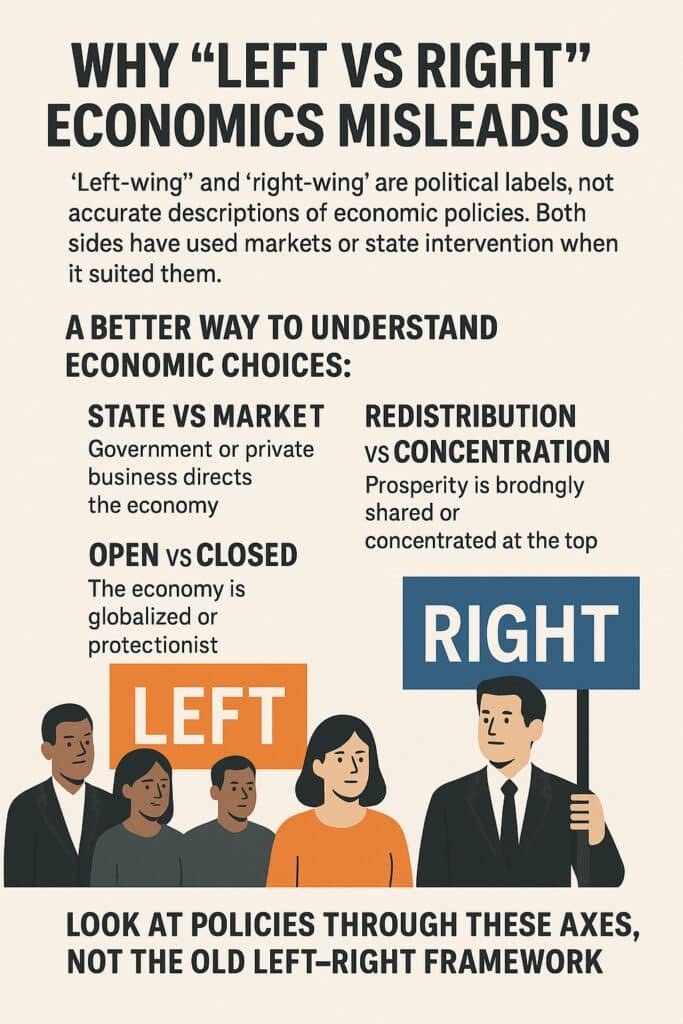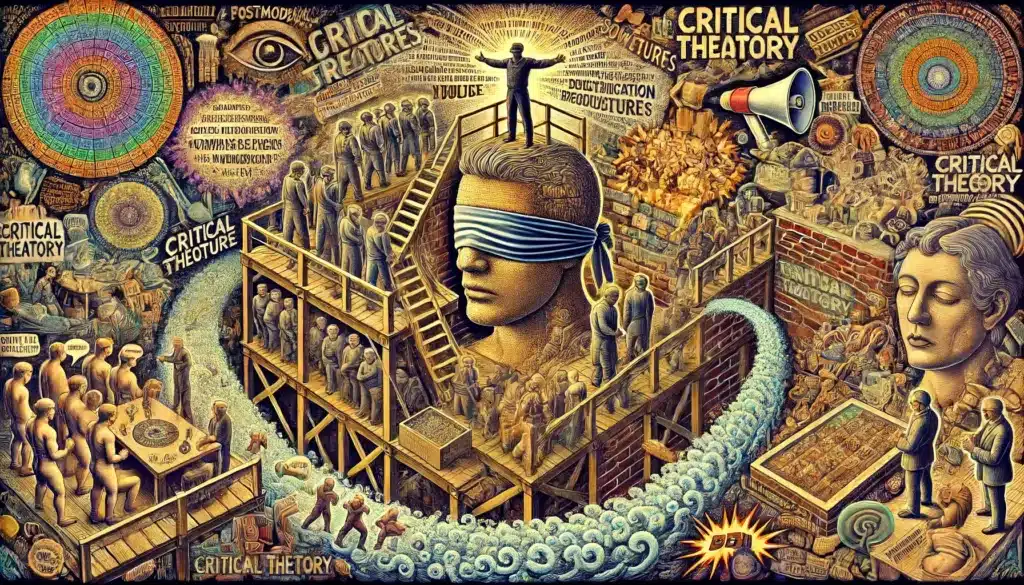Educational Guide: Why “Left vs Right” Economics Misleads Us
What do people mean by “left-wing” and “right-wing” economics?
Most people assume:
- “Left” = more taxes, bigger state, more welfare.
- “Right” = lower taxes, smaller state, free markets.
But this picture is misleading. These are political labels, not real descriptions of how economies work. Both “left” and “right” governments have used markets when it suited them and state intervention when it was useful.
Where did these labels come from?
The terms “left” and “right” go back to the French Revolution, where politicians literally sat on opposite sides of parliament. Over time, the labels were stretched to cover economics. But they were never designed to explain complex economic policies. That’s why they don’t hold up when you look at history.

Haven’t both extremes used state control?
Yes. And that’s the problem with the old framework.
- Communist states ran planned economies with total state control.
- Fascist regimes also used heavy state intervention — corporatism, price controls, and giant public works.
So much for “left means state and right means markets.” In practice, both extremes meddled in the economy whenever it suited their goals.
Why are people so confused today?
Two reasons stand out:
- Neoliberalism (1980s onward): Politicians like Reagan and Thatcher pushed deregulation, privatisation, and free trade — but presented it not as ideology, but as “modern common sense.” Economics was framed as neutral science, not politics.
- The Third Way (1990s): Leaders like Blair, Schröder, and Clinton adopted the same market-friendly policies while still speaking the language of fairness and equality. The result? Voters saw both “left” and “right” parties offering almost identical economic policies.
This blurred the line so thoroughly that people now fight over culture wars while wealth distribution goes unquestioned.
Who benefits from this confusion?
Big business and wealthy elites.
When both major political camps accept deregulation, low corporate tax, and globalisation as “inevitable,” there’s no real debate about who gets what. Voters are distracted by symbolic issues, while economic power quietly shifts upwards.
Confusion is a shield. If people can’t clearly see the economic levers, they can’t challenge who is pulling them.
So what’s a better way to understand economic choices?
Forget “left” and “right.” Instead, look at policies through three clear axes:
- State vs Market: Who is running the show — government or private business?
- Redistribution vs Concentration: Are policies spreading wealth broadly or letting it pile up at the top?
- Open vs Closed: Is the economy globalised and outward-looking, or protected and inward-focused?
These axes cut through the rhetoric. They show the real trade-offs, without hiding behind political branding.
Can you give examples of these axes in action?
- State-led + Redistributive + Open: Nordic countries — free trade, high taxes, strong welfare.
- Market-led + Concentrated + Open: United States since the 1980s — fast growth, weak safety nets, rising inequality.
- State-led + Concentrated + Closed: Fascist and military regimes — heavy control, cronyism, protectionism.
- Market-led + Redistributive + Open: Some social democracies in the 1990s — privatised markets, but strong social programmes.
Notice how this framework avoids the silly “left” vs “right” trap.
How does this affect growth, taxation, and social programmes?
- Growth: Market-led systems often deliver faster growth spurts but with volatility. State-led ones may be steadier but slower.
- Taxation: Redistributive systems rely on progressive taxes. Concentration-oriented systems push for lower, flatter taxes.
- Social programmes: State-led and redistributive models create strong safety nets. Market-led, concentration-oriented ones weaken them, leaving individuals to fend for themselves.
These are the real levers — not whether a politician calls themselves “left” or “right.”
Why is this important now?
Because politics today is full of deliberate distraction. Parties argue over identity, culture, or symbols, while quietly agreeing on the same economic consensus. The public is told that alternatives don’t exist.
But they do. We just need a clearer lens to see them.
How can ordinary people use this framework?
When you hear a new policy proposal, ask three questions:
- Is this giving more power to the state or the market?
- Does it spread wealth or concentrate it?
- Is it pushing the economy to be more open or more closed?
Those answers tell you far more than whether the politician is “left” or “right.”
✅ Takeaway:
The old “left vs right” economic labels are a political trick. They blur the real debate, and that confusion benefits the wealthy. By shifting the framework to state vs market, redistribution vs concentration, open vs closed, we can cut through the noise and see whose interests are truly being served.
Would you like me to tighten this into a publish-ready 900-word article with schema-compliant FAQ markup (so Google can directly show it as FAQs in search results)? That way you can drop it straight onto your site.


